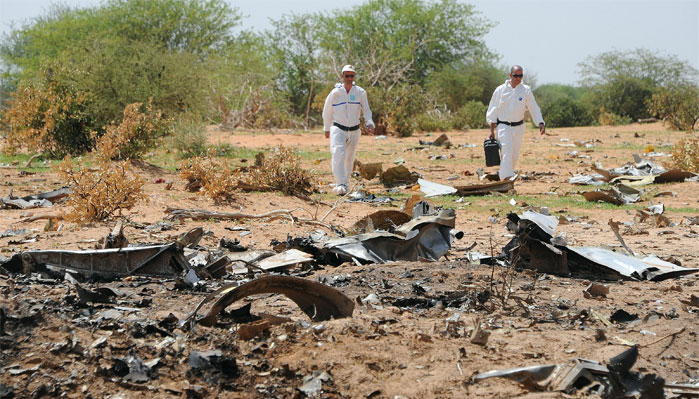Investigators gather evidence at the crash site of the Air Algerie AH5017 in Mali's Gossi region
AFP
Dressed in protective white overalls, French experts sift through the debris of the Air Algerie plane that disintegrated over the northern Mali desert last week, killing all 118 on board.
Yet for days of meticulous searching across the shifting sands of the remote crash site at the southern edge of the Sahara desert, they have yet to see a single intact body.
The nearest town in the desolate landscape where the plane came down is Gossi, a settlement of 25,000 people centred around a cattle market, some 150 kilometres (90 miles) from the regional capital, Gao.
In scorching heat, the experts -- gendarmes, police and a team from France's plane crash investigation agency BEA -- are combing the moonscape one square metre at a time.
Flight AH5017, which took off early Thursday morning from Ouagadougou in neighbouring Burkina Faso bound for Algiers, went missing amid reports of heavy storms.
There were 54 French nationals on the jet, alongside 23 Burkinabe, and nationals of Lebanon, Algeria, Spain, Canada, Germany and Luxembourg.
In addition to body parts or items that could help identify the victims, experts are searching for clues that could help explain why the aircraft was obliterated.
"We realised right away that we would have to go straight to DNA analysis," said Colonel Patrick Touron, deputy head of the French gendarmerie's Criminal Research Institute.
"We saw that we had no intact bodies... just very badly broken bodies which weren't identifiable using the classic forensic methods, dental records and fingerprints."
An international team of investigators is backed up by several hundred soldiers -- French, Malians and troops in MINUSMA, the UN peacekeeping mission in Mali -- who have secured the site.
"Our job is to provide logistical support to French investigators, and their Malian, Algerian and Spanish colleagues," French Chief of Staff General Pierre de Villiers told AFP in Paris.



